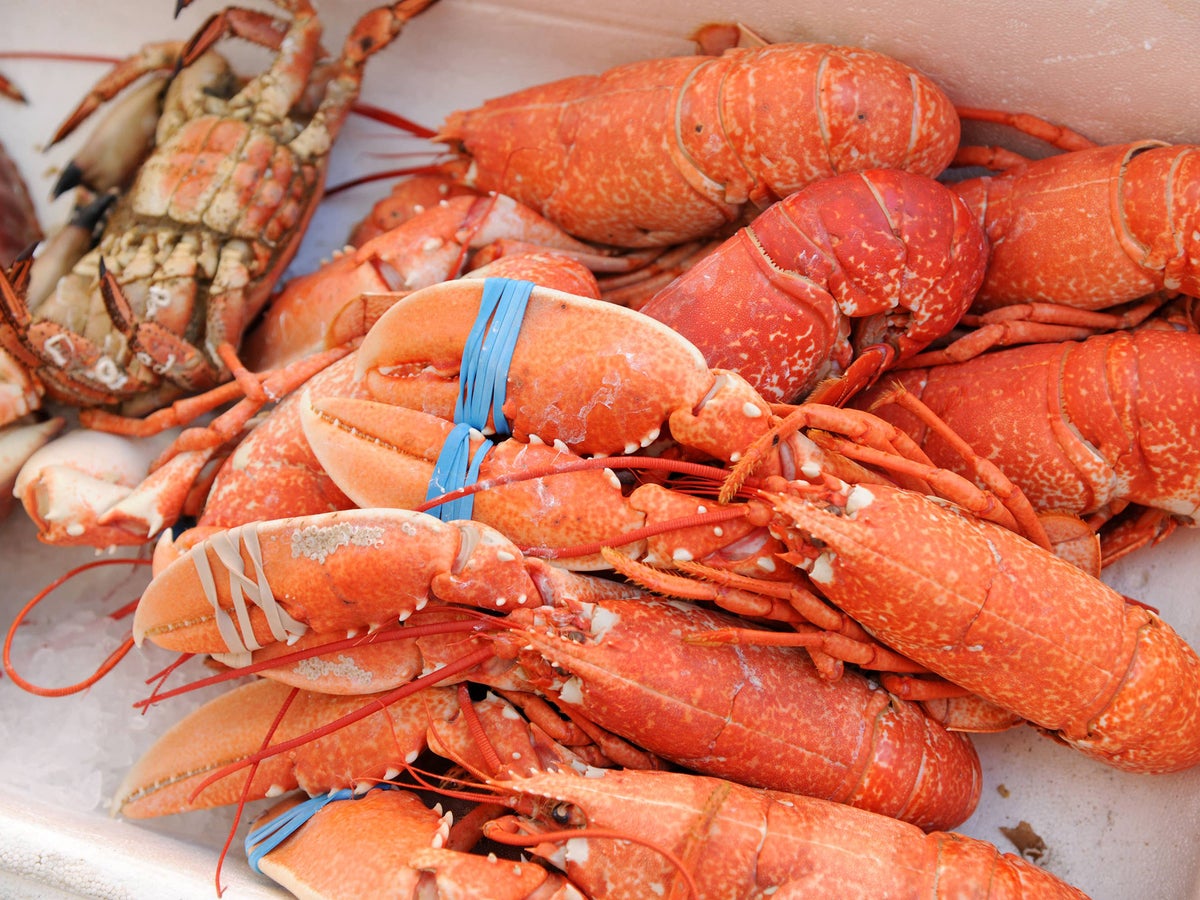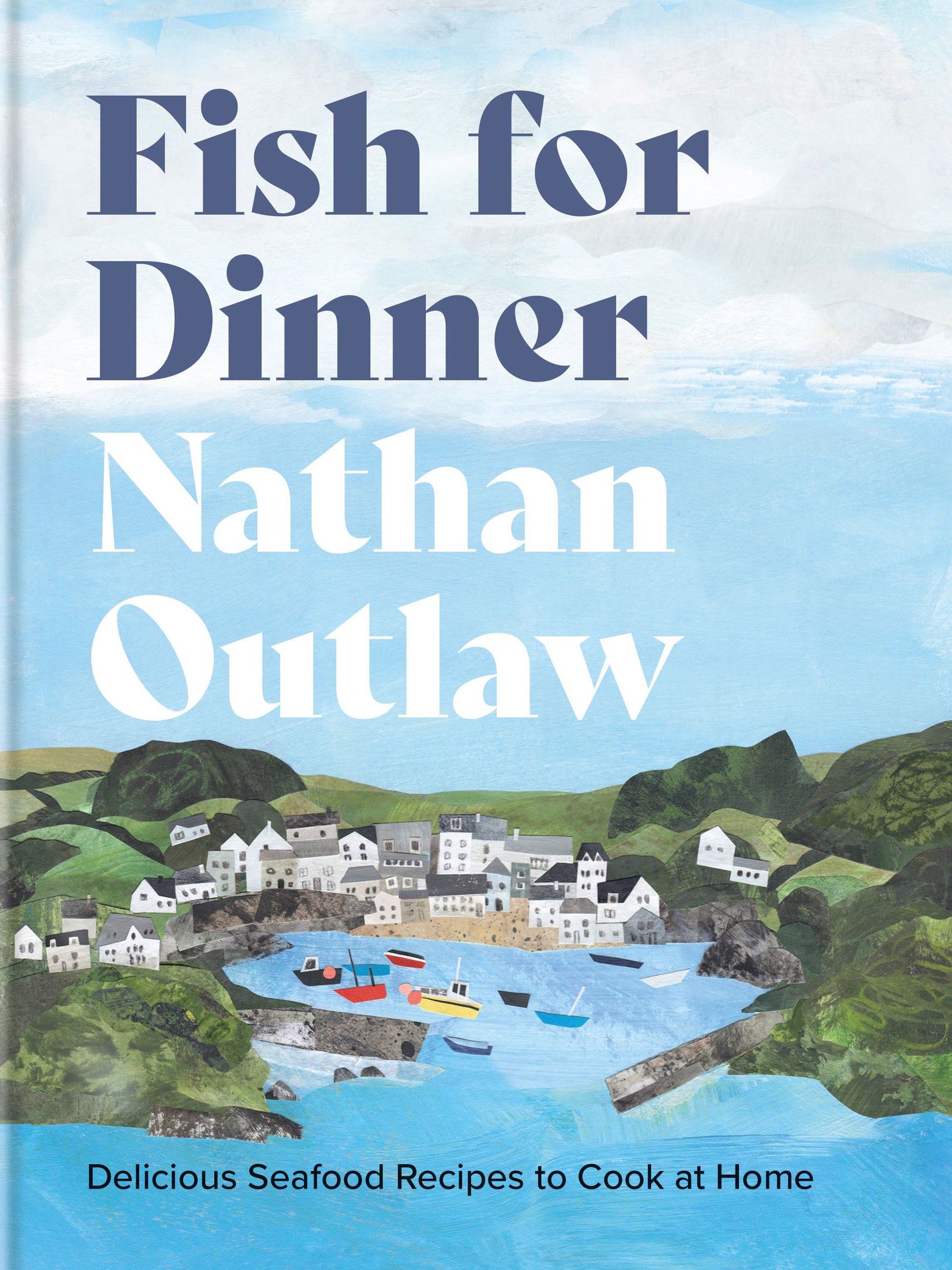
The cost of food is soaring right now, and Nathan Outlaw’s top tip for budget-friendly seafood might surprise you.
“A very good buy at the moment, that everyone thinks is expensive, is lobster,” says the two-Michelin star chef, who is famed for fish cookery.
“Lobster is actually quite an affordable species. It’s obviously got that attachment of being luxury, but there are so many different ways to use it and you can get two or three meals out of one lobster.”
The 45-year-old recommends tail meat for lobster dumplings, or using the meat for an alternative take on sesame prawn toast.
“It’s a way of using a deemed-to-be-expensive species but in a smaller amount, and it goes a lot further,” he says.
So what other fish should we consider buying in the cost-of-living crisis?
“Hake is definitely a good fish that’s cheaper,” says Outlaw, whose acclaimed restaurants include Outlaw’s New Road – where tasting menus cost £175 a head – and Outlaw’s Fish Kitchen, both in Port Isaac, Cornwall.
He suggests also looking for megrim sole, also sold as Cornish sole. “Brill is a really good alternative to turbot, which is a little more pricey. Crab is a good one. If you see ling, a really nice white fish, that’s a good one because it’s usually quite a big fish that you get – it’s from the cod family.”

Outlaw, who trained under legendary seafood chef Rick Stein, says it “baffles” him that as a country we don’t eat more fish.
“We’re not a massive fish-eating nation, which is very strange because A, we’re an island, and B, we’ve probably got the best variety of seafood of anybody – and probably the best sustainable fishermen you can come across.
“Beyond fish and chips, it’s deemed as being quite posh.”
He’s on a mission to make fish and seafood cooking more accessible to home cooks with his new book, Fish For Dinner, full of tips and advice to “demystify” fish – with a big focus on seasonal and sustainable shopping.
Buying vacuum-packed fillets from a supermarket may be how many of us buy fish, but from a cost point of view, we may be getting it wrong. It’s often cheaper in the long run to buy whole fish, says Outlaw, who has appeared on the BBC’s Great British Menu and Saturday Kitchen and counts Michelin-star chef Tom Brown as his protégé.
“You can guarantee freshness with a whole fish, whereas if it’s been filleted you can’t really see it. I always say whole fish is better, you get the bones which are perfect for a stock or base of a really nice broth. It can give you two or three meals, if you just buy fillets you’re just going to get that one meal.”
But he knows buying fish whole does concern a lot of shoppers.
“The main thing people are worried about is it being difficult [to fillet fish at home] and smelling of fish – but if you buy good fish it’s not smelly, it smells of the sea which is quite a nice smell.”
His latest book includes step-by-step pictures demonstrating how to prepare different types of whole fish, and it’s easier than we think, he says. “It’s just practice. Some are more difficult than others; a flat fish [like seabass] is pretty straightforward forward, but maybe butterflying a round fish is a little bit more difficult.
“There was a time when I couldn’t do it, [but] I do believe everyone can do it. People worry about making a mistake and ruining the fish, but you can’t really ruin it. [If] you don’t get close enough to the bone and leave a bit of meat on the carcass, just go in with a spoon and use that for fishcakes or fish pies. You’re never going to waste anything. The best thing you can do is have a go.”

Hailing from Maidstone, Kent, Outlaw says he grew up not liking fish. “As a kid I’d eat fish fingers or fish and chips, barely – I’d have to be convinced,” he laughs. After all, people change. “This is why I’m a good person to talk about fish with.”
He worked in professional kitchens in London in his teens and “gravitated towards the fish area” before landing a job with Rick Stein in Padstow, Cornwall, aged 19, where he really learned his craft – preparing and cooking every type of fish, under kitchen pressure.
“That’s when I started to really appreciate all the different species, the different textures, different seasons… what was sustainable and what wasn’t sustainable.”
Lots of people don’t think of fish as a seasonal ingredient, like fruit and vegetables, but Outlaw says “it’s a huge seasonal thing”.
“That’s the basis of how we run the restaurants – the way I cook fish is completely down to what’s been caught at that time,” he adds. “I never put any demand on a fisherman or fishmonger that I buy from. We just take what’s best at that point for the market.”
It’s why so many of his recipes in the book are designed to be “multi-species” and come with a list of alternative types of fish that will work just as well. You’ll find crab and asparagus stuffed baked potatoes (that can also be made with smoked mackerel), spiced deep-fried gurnard (which can be made with any non-oily fish variety) and jerk John Dory with a coconut and pea salad (which can be made with gurnard, red mullet, sea robin, goatfish or lobster). This spring, look for Cornish hake or ethically-caught monkfish, Outlaw advises.
When it comes to shopping sustainably, we simply need to ask more questions about where it’s come from and how it’s been caught. “If you’re in the UK, you want as much as you can you want to make sure it’s British fish,” he says. “If you’re lucky enough to have a good fishmonger in your town or village, ask: how was it caught? Was it netted? Was it line-caught? Where was it caught? The boat name is a good one [to ask]. That information is readily available to a fishmonger.”
One major mistake many home cooks make is overcooking the fish. “I’d say 80-85 per cent can be eaten raw, for a start, so you never need to worry about [undercooking] with any species that you have at home. Even if it’s slightly undercooked, nothing’s going to happen,” says Outlaw. “It does seem the case that people err on the side of caution and overcook – and then unfortunately what happens is you probably have an experience that’s not great and it’s dry.
“Fillets always cook very quickly – three of four minutes maximum and most fillets of fish are already cooked.”
‘Fish For Dinner’ by Nathan Outlaw (Kyle Books, £28; photography by Kate Whitaker).







